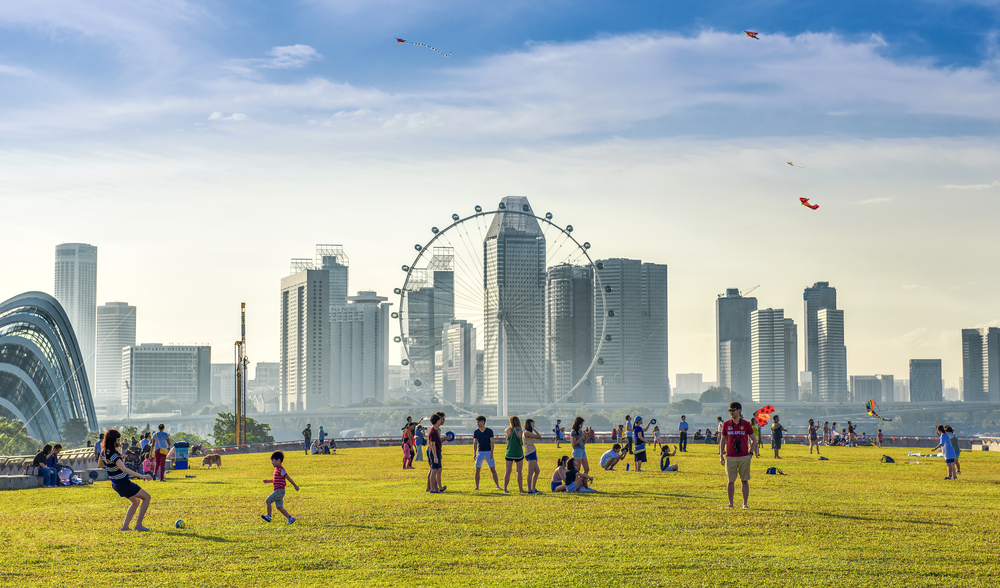Singapore ranks first in the 2022 Safety Perceptions Index with a score of 0.04 and is also one of the top 10 most peaceful countries in the 2022 Global Peace Index.
Singapore’s level of risk was consistently low across all five domains: health, personal, violence, environment and the workplace, as well as every risk theme (worry, likelihood and experience), with only one indicator having a response rate higher than 10%. Singapore also had the lowest overall score for both men and women and was ranked amongst the top ten in every domain and theme.
Violence and Environmental Risk
Singapore performed especially well on the violence and environment domains, being ranked first for both men and women across these two areas. Just 2.8% of Singaporeans reported that they felt it was very likely that violent crime could cause them serious harm in the next two years. However there were noticeable differences in the perceptions between men and women, with 0.8% of men and 4.8% of women stating that it was ‘very likely’.
Perceptions on threat of Climate Change
Despite the low level of risk from severe weather, a high number of Singaporeans stated that they felt climate change was a ‘very serious threat’. Over 70% of Singaporeans had serious concerns about climate change, a much higher level than other countries with comparable levels of overall risk. The threat of sea level rise from climate change, rising average temperatures, as well as an increase in extreme weather events and average rainfall have all been noted as serious risks by the Singaporean government (1).

Perceptions on Food Safety (Health Risk)
The one area where Singapore was not ranked at the apex of the Index was food safety. Close to 11% of Singaporeans reported suffering serious harm or knowing someone who had suffered serious harm from eating food in the past two years. This was a higher rate than 25 other countries, with five countries in the Asia-Pacific region all recording lower rates of harm from eating food. There was a concurrent worry about the risk of eating food, with 9.4% of respondents reporting that they were ‘very worried’, however, only 3.8% of people felt that it was very likely they would suffer serious harm in the next two years from eating food.
Singapore has a higher level of trust in institutions than most countries, including many countries with similarly low levels of risk. This is reflected in attitudes towards both the government and traditional media. 80% of Singaporeans reported that they would look to the government to provide information on food safety, with just over 80% stating they would look to traditional media for information on food safety. Most other low risk countries showed a strong distrust of traditional media, with between 30 – 80% of people in low-risk countries reporting that they would not look to the media for food safety advice.
Singaporeans also demonstrated a strong ability to correctly assess the risk of extreme events occurring. Fewer than 1% of Singaporeans reported that they were likely to be in an airplane accident, drown or be struck by lightning. However, there were a small number of risks where the country was more worried than the global average. Over half of Singaporeans reported being worried about online misinformation; with 43% being worried about online fraud and 28% expressing worry about online bullying.
This is an excerpt from the 2022 Safety Perceptions Index report available for free download. It should be noted that the data for the Index was collected in 2019, and thus predates the COVID-19 pandemic.
(1) Impact Of Climate Change In Singapore (2022) National Climate Change Secretariat Singapore. Available at: https://www.nccs.gov.sg/singaporesclimate-action/impact-of-climate-change-in-singapore/ (Accessed: 14 June 2022).
Safety Perceptions Index
The Lloyd’s Register Foundation Safety Perceptions Index, produced by the Institute of Economics and Peace using data from Lloyd’s Register Foundation’s World Risk Poll measures the levels of worry, likelihood and experience of risk across five domains: health, personal, violence, environment, and the workplace. These domains and themes are combined into a composite score which reflects perceptions of safety at the country level. A high score indicates a high level of concern with safety issues.
The index is scored between 0 and 1, where a score of 1 would mean that every person in a given country was very worried about every risk, thought it was very likely that the risk would occur in the next two years, and had personally experienced the risk or known someone who had in the past two years. Conversely, a score of zero would mean that nobody in a country was worried about any of the risks, had not experienced the risk in the past two years, and thought none of them were likely to occur in the near future.